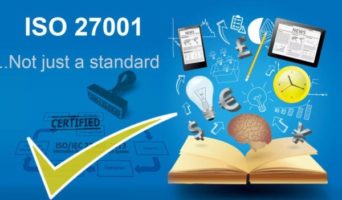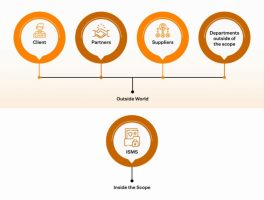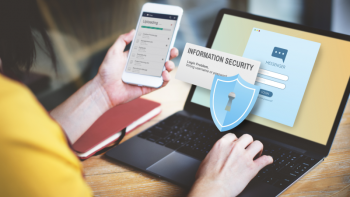Expertise from Forbes Councils members, operated under license. Opinions expressed are those of the author.
Michelle Drolet is CEO of Towerwall, a specialized cybersecurity firm offering compliance and professional cybersecurity solutions.
Organizations collect, store and process vast amounts of data today. Employee information, supplier information, customer information, intellectual property, financial records, communication records—all common types of data that ordinarily exist in almost every business.
When organizations fail to secure or protect this data, it exposes them to a host of business risks like breaches, financial losses, reputational damage or even potential fines and prosecution.
To overcome this challenge, the International Standard Organization (ISO) created a comprehensive set of guidelines called the ISO/IEC 27001:2013 (a.k.a. ISO 27001). These standards help global businesses establish, organize, implement, monitor and maintain their information security management systems.
Unlike standards such as GDPR or HIPAA that primarily focus on one type of data (customer information or personal health privacy), the ISO 27001 encompasses all kinds of business data that is stored electronically, in hard copies (physical copies like paper and post) or even with third-party suppliers.
The ISO 27001 certification is applicable to businesses of all sizes and ensures that organizations are identifying and managing risks effectively, consistently and measurably.
The Three Cornerstones of ISO 27001
The ISO 27001 standard aims to secure people, processes and technology via three main cornerstones: confidentiality, integrity and availability (commonly referred to as the C-I-A triad).
1. Confidentiality translates to data and systems that must be protected against unauthorized access from people, processes or unauthorized applications. This involves use of technological controls like multifactor authentication, security tokens and data encryption.
2. Integrity means verifying the accuracy, trustworthiness and completeness of data. It involves use of processes that ensure data is free of errors and manipulation, such as ascertaining if only authorized personnel has access to confidential data.
3. Availability typically refers to the maintenance and monitoring of information security management systems (ISMSs). This includes removing any bottlenecks in security processes, minimizing vulnerabilities by updating software and hardware to the latest firmware, boosting business continuity by adding redundancy and minimizing data loss by adding back-ups and disaster recovery solutions.
How Businesses Benefit From ISO 27001 Certification
Organizations can enjoy a number of benefits from being ISO 27001 certified.
1. Certification helps to identify security gaps and vulnerabilities, protect data, avoid costly security breaches and improve cyber resilience.
2. Certified organizations demonstrate that they take information security extremely seriously and have a structured approach towards planning, implementing and maintaining ISMS.
3. Certification serves as a seal of approval (or proof) that an independent third-party certified body is routinely assessing the security posture of the business and finds it to be effective.
4. It boosts confidence, demonstrates credibility and enhances brand reputation in the eyes of customers, partners and other stakeholders that their information is in safe hands.
5. It helps comply with other frameworks, standards and legislation such as GDPR, HIPAA, the NIST SP 800 series, the NIS Directive and others while helping to avoid costly fines and penalties.
Seven Steps That Help Organizations Achieve ISO 27001 Certification
Every organization has unique challenges, and your ISMS must adapt to your particular situation. These seven steps can help organizations achieve and maintain accreditation.
1. Secure commitment from stakeholders.
ISO 27001 certification requires organizations to adhere to strict rules and processes. This means that the business must undergo a number of changes to conform to the standard. Changes usually start at the top and trickle down, so it’s important to identify the right stakeholders and secure buy-in. It’s also important to set clear expectations and update all staff members to secure their cooperation as well.
2. Identify, classify and prioritize risks.
Conduct a detailed risk assessment of your ISMS and map security controls with those set out in the ISO 27001 standard. The goal of risk analysis should be to identify which risks exist for what system and determine its related areas of weakness. Prioritize these risks based on the level of threat they pose to the business.
3. Create a framework for identified risks.
Once risks are identified, it’s important to select security measures that help mitigate those risks. All risks, controls and mitigation methods must be clearly defined and updated in the security policy. This helps organizations provide clear guidance to their stakeholders and create a strategic framework that serves as a foundation for information security in the organization.
4. Set clear goals for information security.
Once the areas of application are identified and controls selected, the next step is defining clear benchmarks and expectations. Indicators of performance and efficiency help businesses stay focused on achieving end goals.
5. Implement security controls.
Once the risks, controls and goals are penciled in, the business should hit the ground running. This involves not only the implementation of new processes and systems, but it might also involve a change in the workplace culture. It’s possible that employees might resist change, so it’s important that adequate investment is made in security awareness training programs that sensitize employees and help them embrace security habits and behaviors.
6. Continuously monitor and fine-tune as necessary.
As the business evolves, processes and systems also evolve, and so do risks. Businesses must continuously monitor and adjust security controls to align with these evolving risks. A good idea is to conduct a preliminary audit prior to the actual certification audit to uncover hidden vulnerabilities that could negatively impact final certification.
7. Focus on continuously improving the ISMS.
Security is not a destination but a journey. You may have already been audited and certified by now, but it’s important to continue monitoring, adjusting and improving your ISMS. The ISO 27001 mandates third-party audits (called monitoring audits) at planned intervals to ensure you still comply with the standard. Certification will only be renewed if monitoring audits are successful.
ISO 27001 is not only about protecting data; it’s also about improving the business. Organizations that can harness these best practices will arrive at a superior security posture and enjoy significant competitive advantages.
Forbes Technology Council is an invitation-only community for world-class CIOs, CTOs and technology executives. Do I qualify?
Source:
https://www.forbes.com/sites/forbestechcouncil/2022/03/23/iso-27001-certification-what-it-is-and-why-you-need-it/?sh=2663d49641a6







